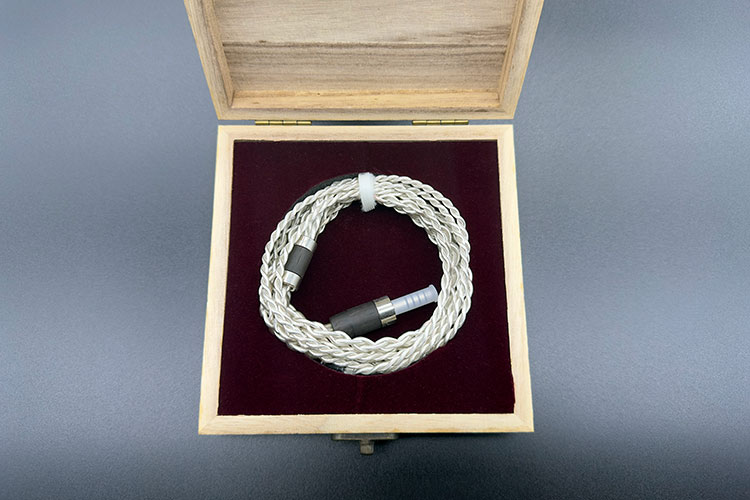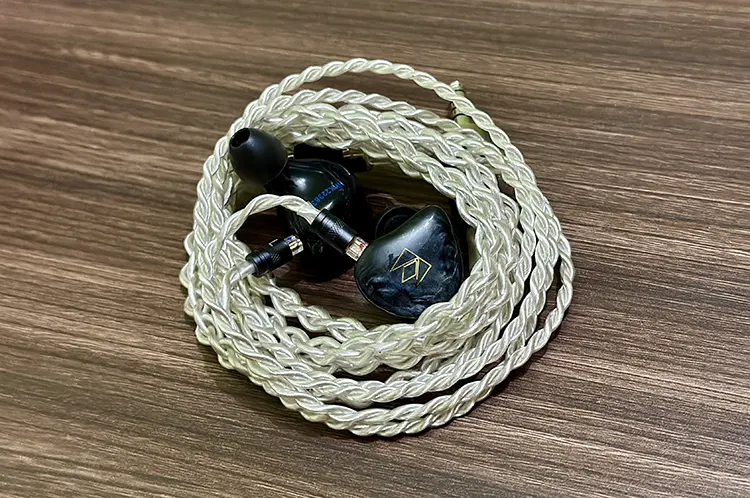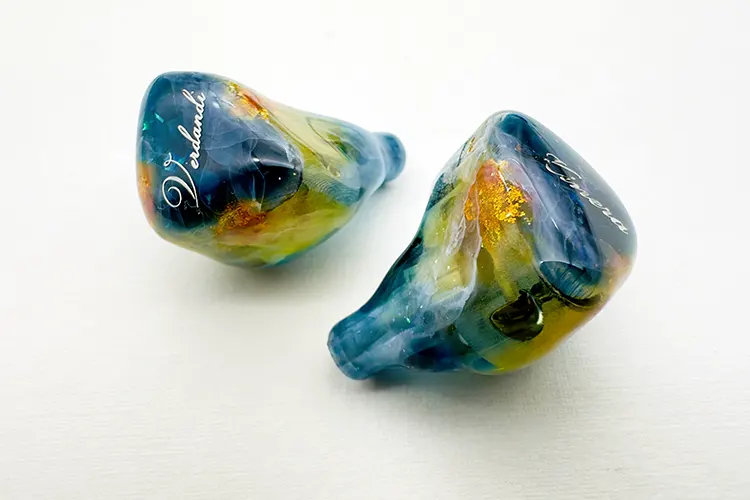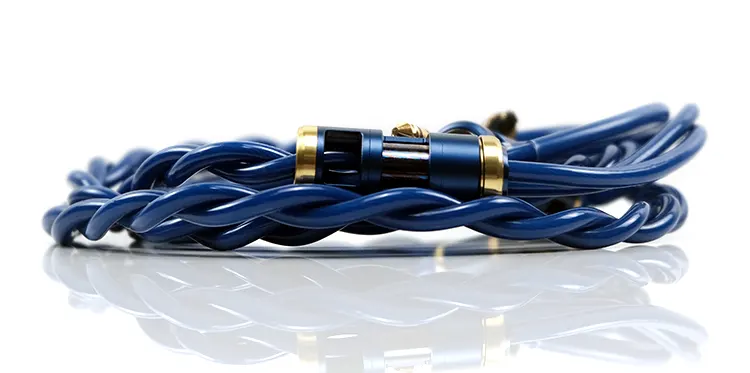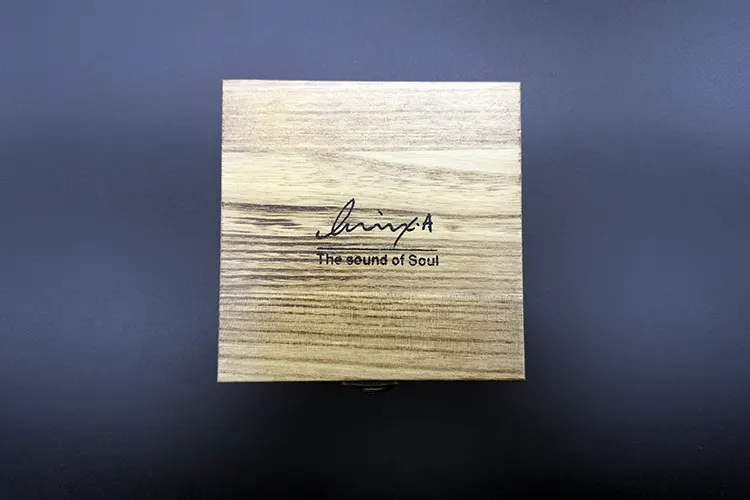Synergy
64 Audio Fourte
The Fourte typically has an impactful lower end with deep sub-bass. The mids are slightly warm and natural, with good clarity and decent resolution. The treble has nice energy and sparkle. The soundstage has a nice, three-dimensional feel with decent width and depth.
The combination of Tri-Light and the Fourte doesn’t particularly resonate with me, but there are notable enhancements that elevate the Fourte’s sound to a new standard.
The Fourte already has a polarizing view when it comes to treble energy. Adding any extra energy to the treble region, as Tri-Light does, can occasionally result in a harsh upper-frequency region.
While the cable brings about several positive changes, it may not be the ideal choice for people with a low tolerance for energetic treble. If you have a good tolerance for treble, the pairing of Tri-Light and Fourte can be very enjoyable.
Through the lows, the Tri-Light does not add much beyond bringing out a decent texture. The sub-bass goes very deep; however, the impact appears somewhat diluted, highlighting a weakness in the cable’s handling of the bass region.
The lower midrange exhibits nice clarity and enhanced resolution with vocals that boast superior detailing and extension. As mentioned earlier, mids are a strength of the Tri-Light and the cable does good things for the already nice mids of Fourte.
Every note comes out clean and crisp, and detailing is something that leaves a lasting impact. The upper mids strike a fine balance between detail and energy; however, there is a slight hint of sharpness.
The soundstage experiences a decent upgrade with the Tri-Light. There’s enhanced depth and improved instrument separation, leading to an overall boost in technical performance compared to the stock cable.
Noble Audio Kublai Khan
The Kublai Khan typically has a balanced tuning with a twist in the highs. The bass is fun with decent impact, the mids are detailed and forward, and the treble has nice energy and sparkle.
The soundstage on the Kublai Khan is quite wide, and the imaging and layering are very decent too, making it a solid allrounder.
Talking about synergy, the Tri-Light and Kublai Khan have a similar effect as the cable has with the Fourte, albeit with less emphasis on energy added to the treble region in the case of the Kublai Khan.
The Kublai Khan, in its default settings, has a very decent sub-bass and a rather lean mid-bass. The cable is less adept with the bass response by adding a near-neutral character to the bass region. The bass is now less impactful and misses the fun element, however, the texture and layering have improved.
The Tri-Light pairing brings a positive change through the mids by creating a lusher more organic tonal quality. Instruments occupying the midrange spectrum have a significantly fuller presence. As with the Fourte, there is a nice sense of clarity and enhanced detailing, making the mids more enjoyable.
There is some additional energy in the highs but not to the point that it’s harsh or sibilant. The Kublai Khan already has an impressive treble profile, and the cable pushes it even further. Cymbals and high hats sound crisp and natural.
From a technical standpoint, there’s a decent improvement in the soundstage in terms of depth, width, and overall expansiveness. Instrument separation demonstrates noticeable enhancement, and the layering is significantly refined, resulting in a more immersive presentation.
Kinera Verdandi
The Kinera Imperial Verdandi is a warm-sounding IEM with decent bass and an energetic upper midrange. The treble is detailed and has a good amount of clarity; however, it is mostly relaxed.
The Tri-Light cable brings some nice changes to the Verdandi. The treble region where Verdandi takes a back seat now becomes more detailed and extended. There is more sparkle and a sense of airiness. The upper mids and the lower treble region are more coherent, and the sharpness in the upper mids is diminished.
The midrange exhibits a decent richness, sounding lusher, and with an improved body. The Verdandi has more intimate vocals now. Mid-range instruments get a better presence, and the notes come out very detailed. There is a sense of enhanced clarity, which allows the finer nuances to come across quite vividly.
Through the lows, the Verdandi has a nice impact but lacks a bit of body and a hard-hitting slam. With the Tri-Light cable, the lower end does not gain much, staying relatively lean.
On the stock cable, the Verdandi is quite decent in the technical aspect. Switching to the Tri-Light, there is a noticeable impact on the soundstage and layering. It’s very evident how well separated and clearly, every detail comes out.
Select Comparisons
Effect Audio Code 24
Technical
The Code 24 is a premium offering from Effect Audio’s Code series. The cable consists of two strands of 16.5 AWG wire made of silver-plated copper.
The wire within the cable has a proprietary multi-sized strand blend using 13 multi-sized core bundles. The core has three smaller cores to give the cable better flexibility.
Design
The design elements on both of these cables are very different. It is hard to decide which one suits my taste. While Code 24 has a colorful and artistic approach, the Tri-Light has a nice minimalistic approach with a white pearly appearance. Both have undeniably beautiful appearances.
The splitter and 4.4mm termination adapter on the Code 24 are designed quite differently, maintaining a touch of elegance. These elements feel more durable than those on Tri-Light.
The Code 24 cable has more weight than the Tri-Light which is more flexible and easier to use despite having a similar thickness.
The Code 24 cable features TermX and ConX swappable systems, similar to many Effect Audio offerings. This gives users the flexibility of changing to different terminations and connectors depending on the types of sources and IEMs they may use. Such an option is not available with the Tri-Light.
Performance
Both cables bring out significant improvements in the sound in their unique way. Code 24 focuses on refining the sound and giving some extra punch, whereas the Tri-Light focuses on detail and improving the technical aspects.
With the Code 24 cable, the additional punch and sub-bass power are immediately noticeable. This is where the Tri-Light lags. The Code 24 cable does a better job of delivering a well-textured bass with more punch.
In the mid-range, the Tri-Light has an upper hand, and the differences it brings are more noticeable. It brings out more detailing and clarity in the mid-range and gives the vocals and mid-range instruments more space to breathe. The mid-range has better resolution and a more forward presence on Tri-Light.
In the treble region, the Tri-Light performs better than the Code 24. While Code 24 does add to the sparkle and detailing in the upper frequencies, with the Tri-Light there is a better sense of airiness, and the treble region has more energy.
The Tri-Light’s soundstage feels more holographic, imparting a distinctly three-dimensional sensation compared to Code 24. While Code 24 effectively improves instrument layering, Tri-Light edges slightly ahead in this aspect.
Astral Acoustics Mars
Technical
Mars is a pure copper cable from the brand Astral Acoustics. It features a three-stranded coaxial design with a combined effective gauge of 21AWG.
Design
In terms of design, both cables have quite different characteristics. The Mars adopts a very minimal and tidy approach to its design. The splitter, termination plug, and IEM 2-pin connectors are made from black-anodized aluminum, featuring a matte-like finish. Each component exhibits amazing craftsmanship with great finishing.
The Mars has a softer feel and is very flexible. It is quite easy to roll up and store. The cable is thinner and lighter compared to the Tri-Light and is easier to use. Both cables have different aesthetics, so it’s hard to choose one over the other.
Performance
The Mars is a high-quality copper cable, so it exhibits all the qualities of a good copper cable. The changes it brings to the IEMs are quite different from what the Tri-Light brings. In a nutshell, Mars adds more warmth to the sound.
In the lower region, Mars introduces a decent punch and impact. The sub-bass is a lot better-bodied and goes deeper. There is better texture and layering in the bass region. This is where the Tri-Light takes a back seat and does not add much to the quantity.
Mars adds a decent body and thickness to the lower midrange and makes the mid-range forward and intimate. One should not expect a resolution level that we can get from the Tri-Light. The Tri-Light is quite ahead in terms of micro-detailing and resolution. The clarity is a lot better with the Tri-Light.
As expected from a copper cable, Mars tones down the energy levels in the treble region. It is quite suitable for IEMs with a bright sound signature. The pairing of 64 Audio Fourte with Mars is quite decent, as it helps to smooth the treble on the Fourte. However, the technicalities are a bit eclipsed on Mars.
Mars does not have a positive impact on the soundstage and detailing. The soundstage is constrained, and the width is diminished. The depth is marginally enhanced, but the overall stage becomes smaller. The Tri-Light is quite ahead in terms of technical prowess.
My Verdict
As its name implies, the Luminox Audio Tri-Light IEM cable shines with distinct brilliance. Crafted with triple coaxial Litz wires, it delivers a rich, warm, and seamlessly immersive sound experience characterized by a balanced and pleasing tonal quality.
There is a significant improvement in the detailing and soundstage. All the subtle nuances are more pronounced and clearly audible. The mid-range shines with an improved level of tonal accuracy, resolution, and clarity. There is quite an improvement in the treble region too, and the cable is ideal for the IEMs which lack energy and details in the upper frequency region.
All these factors make this cable a good candidate for someone who is looking to upgrade.
Luminox Audio Tri-Light Specifications
- Material: Silver Plated OCC Copper/OCC Copper/Silver Plated Copper coaxial wires
- Plug: 4.4mm Balance
- Connector: 0.78 Dual-Pin
- Length: 1.2m

